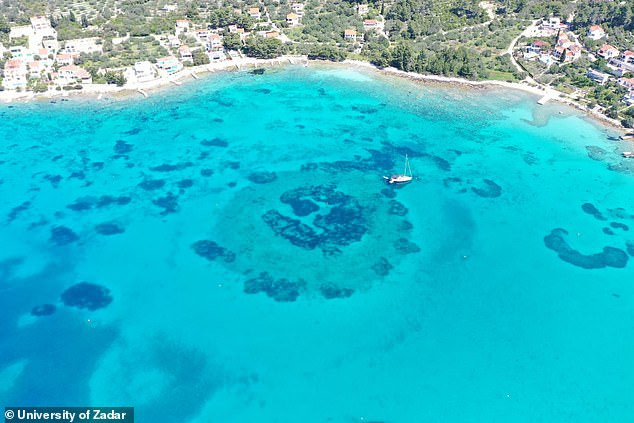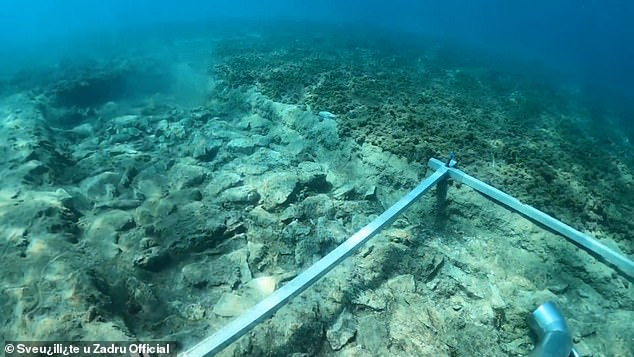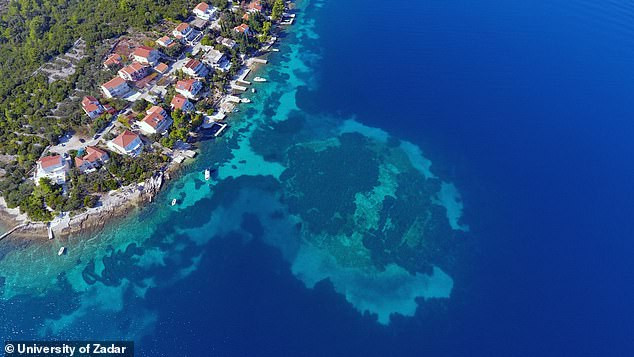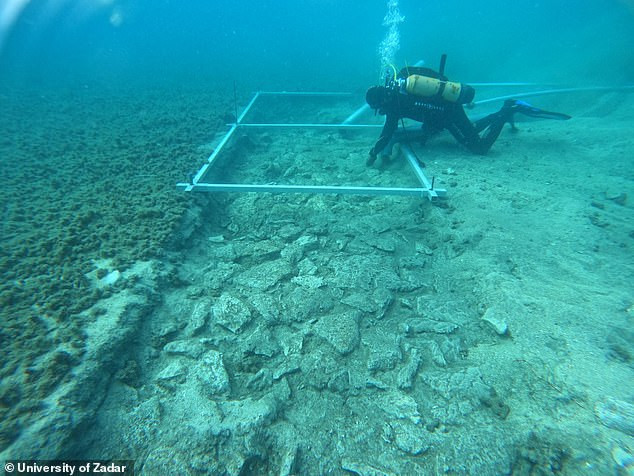They believe that this prehistoric road may once have connected Korčula and Soline, when the latter was a man-made land that was home to the ancient Hvar civilization
The remains of a Stone Age road, built 7,000 years ago, have been discovered at the bottom of the Mediterranean, off the coast of Croatia, in the Adriatic Sea.
Archaeologists made the surprising find after analyzing satellite images of the sea around the now-submerged Neolithic site of Soline, which was discovered in 2021 off the coast of the Croatian island of Korčula.
They believe that this prehistoric road may once have connected Korčula and Soline, when the latter was home to the ancient Hvar civilization.
Korčula, part of the Adriatic archipelago, was originally connected to the mainland, but when the sea level began to rise at the end of the last ice age in 12,000 BC, it began to be flooded with water, with the current landscape to be formed about 8,000 years ago.
Soline was discovered by the archaeologist Mate Parica, of the University of Zadar, who together with his colleagues started the research in the area.
During the exploration, the experts came across the walls of an ancient settlement, which seemed to be connected to the main island by a narrow strip of land.
“Fortunately, this area, unlike most parts of the Mediterranean, is safe from big waves, as the many surrounding islands ‘cut’ the waves and protect the coast,” Parica said when he his original discovery.
“That certainly helped preserve the site from natural disaster.”
Experts believe that the road was built by the Hvar-Lisičići culture. Radiocarbon analysis of the preserved wood present at the site indicated that the Soline settlement dates to around 4,900 BC. “People walked this road almost 7,000 years ago,” the University of Zadar said.
Although it is now hidden under layers of marine mud, archaeologists said the passage was carefully constructed with stone slabs and is about 4 meters wide.
The same research team also discovered another underwater settlement on the opposite side of Korčula.
Bearing an uncanny resemblance to Soline, it is also sunk to a depth of 4-5m and has led to the discovery of some interesting Stone Age tools.
“Neolithic objects such as blades, stone axes and fragments were found in the area.”
Archaeologists believe that the new settlement was also inhabited by the Hvar people.
Historians and archaeologists believe that the Stone Age Hvar civilization probably established trade links between the island and the eastern shores of the Mediterranean, in present-day western Asia.
Source :Skai
With a wealth of experience honed over 4+ years in journalism, I bring a seasoned voice to the world of news. Currently, I work as a freelance writer and editor, always seeking new opportunities to tell compelling stories in the field of world news.














